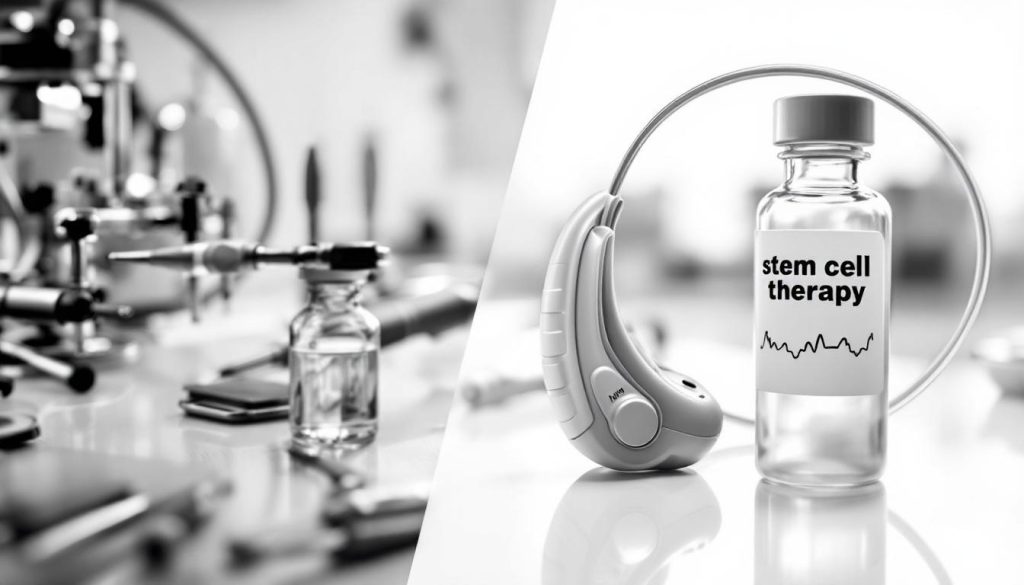In a groundbreaking development, the United Kingdom is preparing to launch the world’s first clinical trial of a revolutionary stem cell therapy aimed at potentially eliminating the need for hearing aids in individuals with severe hearing loss. This novel treatment, developed by Rinri Therapeutics—a spinout from the University of Sheffield—targets sensorineural hearing loss, a condition caused by damage to the inner ear or auditory nerve, which often results from ageing, genetic defects, or injuries such as measles.
The pioneering Phase I/IIa trial will involve 20 patients with profound deafness who are undergoing cochlear implantation. Conducted in three NHS centres located in Birmingham, Cambridge, and London, the study will test the regenerative therapy known as Rincell-1. This involves injecting specially cultivated primary auditory nerve stem cells into the tight space between the inner ear and brain. These cells are laboratory-grown from donor cells and are pre-programmed to mature into auditory nerve cells that can transmit sound signals to the brain, essentially replacing the damaged nerve cells that current treatments cannot repair.
Animal studies have yielded promising results, demonstrating notable improvements in hearing with no serious side effects. Professor Doug Hartley, Rinri Therapeutics’ chief medical officer and a professor of otology at the University of Nottingham, emphasised that these stem cells are uniquely designed to differentiate only into auditory nerve cells, thereby minimising the risk of cancerous growth—a significant concern with other stem cell therapies.
The UK’s Medicines and Healthcare products Regulatory Agency (MHRA) has granted formal approval for this first-in-human trial, underlining the potential breakthrough it represents for millions affected by sensorineural hearing loss. Initial clinical proof-of-concept data are expected within 12 months of the trial’s commencement, with preliminary results anticipated by 2027. Should the trial prove successful, the therapy could eventually extend to treating moderate hearing loss as well.
Central to the trial is an innovative, minimally invasive surgical technique developed by Rinri Therapeutics to deliver the regenerative cells directly to the auditory nerve. This approach, detailed in a peer-reviewed publication in Nature Scientific Reports, represents a significant advance in the precise and safe administration of cell therapies to delicate inner ear structures. This surgical method promises to revolutionise treatment by providing a direct, effective route to the cochlear nerve.
Despite the optimism surrounding this effort, some medical specialists urge caution. Professor Nish Mehta, an otolaryngology consultant at London university hospitals, warned about potential risks tied to opening the inner ear for cell injections, which could inadvertently damage the remaining healthy hair cells and exacerbate hearing loss. He highlighted that approximately one-third of cochlear implant patients lose residual natural hearing post-implantation. Adding to the complexity, Professor Kevin Munro of Manchester University pointed out the challenge in distinguishing whether hearing loss stems from nerve or hair cell damage—a factor that could affect treatment efficacy.
In the UK, around 1.2 million people suffer from severe hearing loss, with approximately 12,000 reliant on cochlear implants at an average cost of £20,000 per device. While hearing aids and cochlear implants assist patients, they do not address the underlying nerve damage and often generate background noise. If Rinri Therapeutics’ stem cell therapy proves effective, it could fundamentally transform the management of hearing loss by restoring natural hearing function rather than merely compensating for its loss.
Further supporting this innovative approach, Rinri Therapeutics secured £1.4 million in seed funding to advance the transition of their preclinical programme into clinical trials. This financial backing underscores the treatment’s potential to become a viable solution for sensorineural hearing loss, offering renewed hope to millions worldwide.
📌 Reference Map:
- Paragraph 1 – [1], [2], [3], [6]
- Paragraph 2 – [1], [2], [3], [6], [7]
- Paragraph 3 – [1], [4], [5]
- Paragraph 4 – [1], [2], [3], [6]
- Paragraph 5 – [1], [2], [3], [6], [7]
- Paragraph 6 – [1], [7]
- Paragraph 7 – [1], [3], [7]
- Paragraph 8 – [1]
Source: Noah Wire Services





